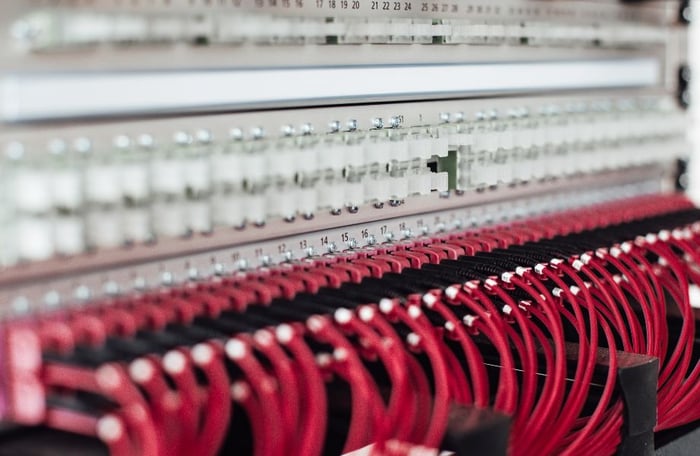What is preventative maintenance?
What is preventative maintenance?
All machinery and assets break down over time from general wear and tear. It is possible, however, to slow down their ageing process and prevent failures with a simple strategy called preventative maintenance. By applying this strategy, equipment has a longer life span, which can hugely benefit companies in multiple ways. Using IoT alongside this provides even more significant advantages and makes maintenance a walk in the park.
We will dive into the benefits of not only preventative maintenance but how IoT can improve it even further.
What is preventative maintenance?
Preventative maintenance is maintenance that is performed on a regular and scheduled basis, rather than a reactive one. This helps to reduce the risk of failure and unplanned downtime, helping to save companies time and money. Issues with machinery can be found before a problem occurs, during scheduled tasks like cleaning, adjustments, minor repairs, oil changes, inspections or a complete service of equipment if needed.
IoT and preventative maintenance

With the increase in IoT usage in recent years, many companies have been able to manage their data and have shifted from reactive maintenance to preventative more effectively. Smart predictive maintenance goes beyond the traditional methods to collect real-time data that is not otherwise possible when done manually. IoT devices can monitor multiple and connected assets, automate maintenance tasks, integrate maintenance systems and much more.
What are the different types of preventative maintenance?
-
Usage-based preventative maintenance
Usage-based preventative maintenance triggers an alert when a certain amount of usage has been performed on an asset. This type of maintenance tracks the average daily usage and uses it to provide a due date when inspection and maintenance should be performed.
-
Time-based preventative maintenance
Time-based preventative maintenance is scheduled at intervals, such as every two weeks. Maintenance action is required when the due date is triggered. Other examples could be on the first day of every month or checking once every two months.
-
Predictive maintenance
Predictive maintenance is scheduling maintenance actions before a problem occurs. This includes a thorough check of the asset's condition to determine when maintenance should be completed. Maintenance tasks are then scheduled to prevent failures.
-
Prescriptive maintenance
Prescriptive maintenance is not only able to show that failure is going to happen but also notifies the user when it will happen and why it is happening. This reduces the risk of failure as it helps to analyze and provide potential outcomes before the error occurs.
Why is it important to carry out preventative maintenance?
Adopting a preventative maintenance strategy is important for the success of facility management. It helps to keep equipment operating efficiently and avoids costly repairs, which in turn saves money. It is said that a preventative approach to facility management could save thousands of pounds and AMB predicts that a reactive approach will cost three to four times more than using a preventative strategy.
As well as this it increases the safety of employees. Routine checks uncover and prevent any hazards that could be harmful to staff within the workplace. Read on to gain a greater understanding of all the benefits that preventative maintenance can provide.
Benefits of planned preventative maintenance
Reduced downtime
When machinery is not functioning fully, it creates company losses. While using a reactive maintenance strategy, machinery could fail at any time, which only results in idle jobs and uncompleted tasks.
When preventative maintenance is performed, there is the opportunity to schedule inspections at a convenient time for the company and employees,for example when staff are out of the building or when machinery is not in use. This not only decreases disruptions but reduces the risk of downtime during working hours.
Using IoT for predictive maintenance allows the gathering of data from multiple connected devices. Using IoT sensors which record and track the condition of an asset, allows for the prediction of possible failure. This enables operators to schedule inspections to avoid unexpected downtime. Downtime can be reduced significantly when using IoT.
Efficient equipment performance
All machinery breaks down after extensive usage and general wear and tear. Using a preventative maintenance strategy allows the equipment to be kept in good working condition. Scheduling regular checks and inspections ensures that machinery is running as it should. Furthermore, machines that are working well use less energy than those that are not, which will contribute to saving money on energy bills.
OEE (overall equipment effectiveness) is a KPI which is commonly used when measuring the efficiency of machinery. OEE allows machinery to be rated in three categories: performance, availability and quality.
Using IoT alongside preventative maintenance improves OEE evaluation greatly. Here are some benefits of using IoT solutions to help with the measurement of OEE:
- Analyzes performance and historical data of assets
- Provides warnings involving a reduction in performance on machinery
- Able to record parameters, including temperature, speed and production time of assets
- Ability to compare previous production results with new ones
Safer workplace
Routine checks can uncover hazards and prevent broken machinery from creating an unsafe working environment. Poorly maintained or unsafe machinery can cause multiple types of injuries, including electrocution, scalping or facial disfigurement. Deaths are also sadly common, particularly where machinery has malfunctioned. Routine maintenance can reduce the risk of injury and improve the overall health and safety of employees.
Using smart technology to analyze data can enhance workplace safety. It is said that workplace safety has never been so high since the emerging adoption of IoT technologies. Instead of manually analyzing data, IoT solutions can gather more comprehensive information that will help prevent risks and injury and promote better safety for employees.
Company reputation
As well as saving money on costly repairs, improving the safety of employees and reducing downtime, a company's reputation will also be better off when using this maintenance strategy. As we know, reactive maintenance only leads to missed deadlines and idled tasks, resulting in a bad reputation if tasks and production are frequently on hold. As well as this, if employees' safety is at risk and injuries occur in the workplace this can also lead to bad press.
Ensuring equipment is running as efficiently as possible helps to create a reputable brand image and increases both employee and customer satisfaction. In companies which use manufacturing facilities for the sale of goods, preventative maintenance increases the quality of goods produced and allows for greater customer satisfaction and brand image, resulting in an increase in revenue.
Saving money
As we mentioned previously, a reactive strategy can cost up to three to four times more than a preventative one. Reactive maintenance has to accommodate the cost of emergency shipping on machinery parts, the hire of specialised technicians and the loss of production and sales whilst equipment is out of use. Even worse, failing to maintain machinery could result in the need to completely replace costly equipment, when this could be prevented.
It may seem like time and money will be saved when performing a reactive strategy but maintaining equipment will be a much more significant long-term benefit.
How can smart technology help preventative maintenance?
Preventative maintenance is a match made in heaven with IoT. Smart technology can gather constant updates about the usage, activity and condition of machinery. Maintenance can be time-consuming and complicated but with IoT, data can be collected to produce alerts and predictions.
The extensive data and analysis from IoT devices enable manufacturers to improve the condition and reliability of their operations and equipment. Operators can begin to truly understand the condition of their assets, allowing for a smoother maintenance strategy that removes poorly performing assets from their operation.
Benefits of remote monitoring for preventative maintenance

- There is a greater risk of error when data is manually monitored and tracked. With a remote monitoring system, it can read key data that is much more accurate and can provide more important information. This allows for the prevention of failures and better recognition of when something needs to be fixed or inspected
- Automatic management of reordering of tools and supplies is possible, reducing the cost of storing and management and having them available (only when needed) for maintenance
- Productivity is said to be improved by 15% to 50% whilst using a remote monitoring system
- Remote monitoring systems can access information instantly. Technicians can access the repair and maintenance history of an asset in a remote location to inspect its repair problems. More effective maintenance requests can also be made by facility managers by being able to review the state of an asset remotely
Using IoT for maintenance of data centres

Data centres are particularly susceptible to downtime, which can lead to a significant loss of revenue and a damaged brand reputation. Using IoT can help companies proactively monitor data centres to solve any issues that could be harmful to equipment and its performance. Our data centre solution at Metrikus can provide real-time data which can create a highly effective preventative maintenance strategy within data centres.
Summary
Performing preventative maintenance has undeniable benefits for companies. Not only does it reduce downtime, prevent unexpected costly repairs and increase the safety of employees, but it also creates a strong brand image and reputation. Equipment also obtains a longer life span and it is a more beneficial long-term strategy. Putting off maintenance and performing a reactive strategy hugely increases overall costs, the risk of failure and emergency repairs.
Adopting smart technology alongside a preventative maintenance strategy makes maintenance an easier task to deal with. IoT devices collect valuable and extensive data that can not be collected manually, greatly preventing the risk of failure. preventative maintenance helps to reduce costs but IoT can reduce expenditure even further.
Our IoT solutions at Metrikus can help companies to kick start or greatly improve their preventative maintenance strategy with smart technologies. Get in contact with us today to find out how we can help you.




